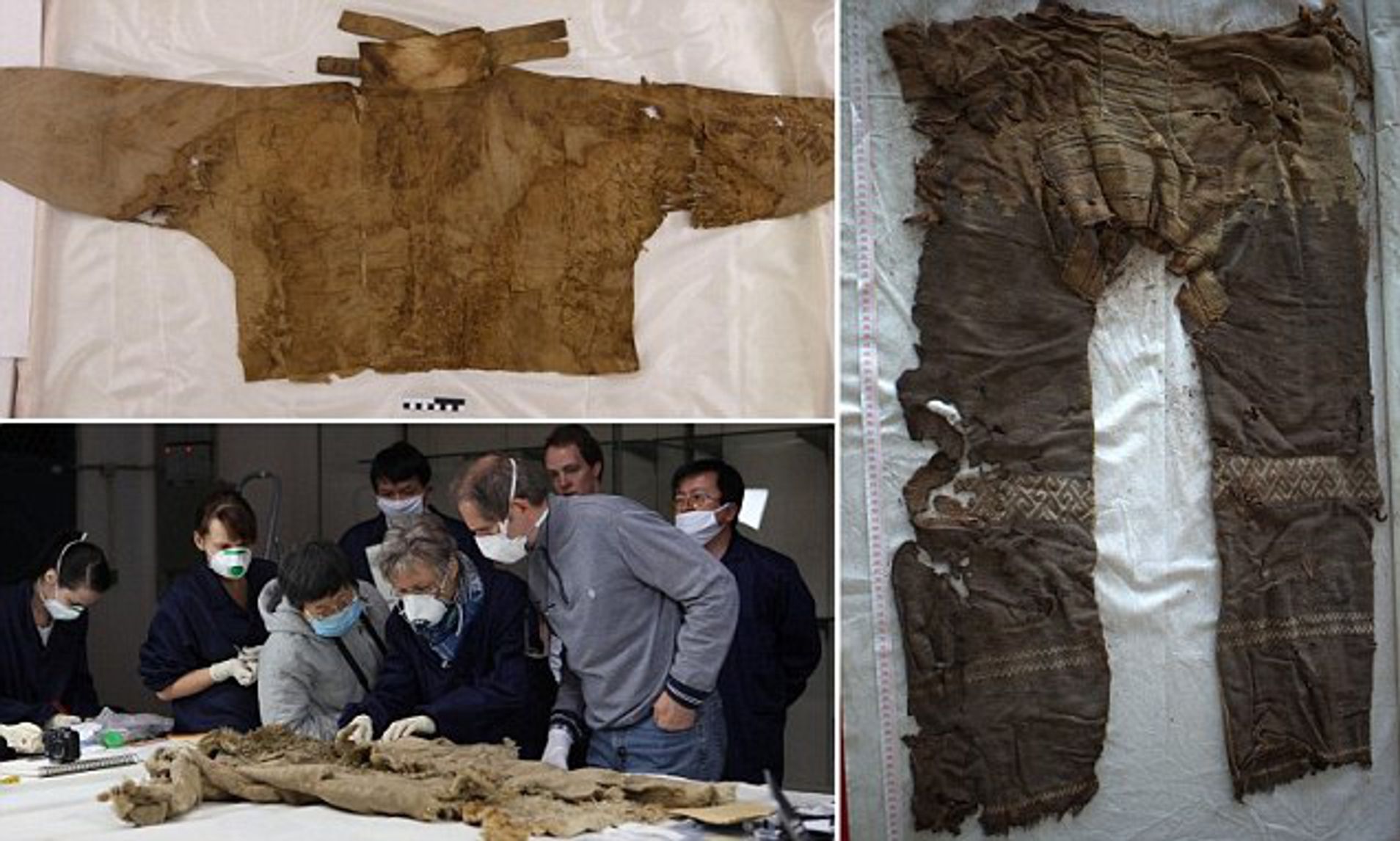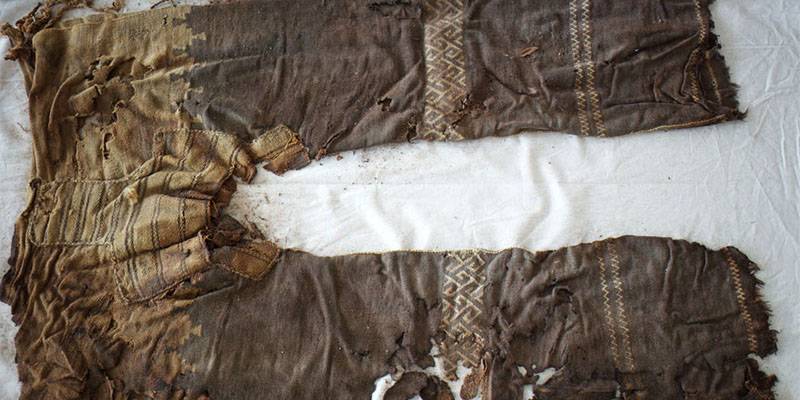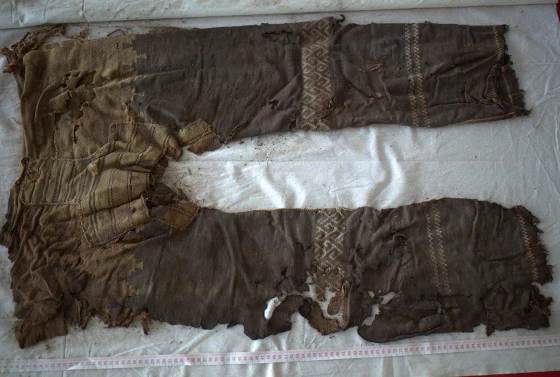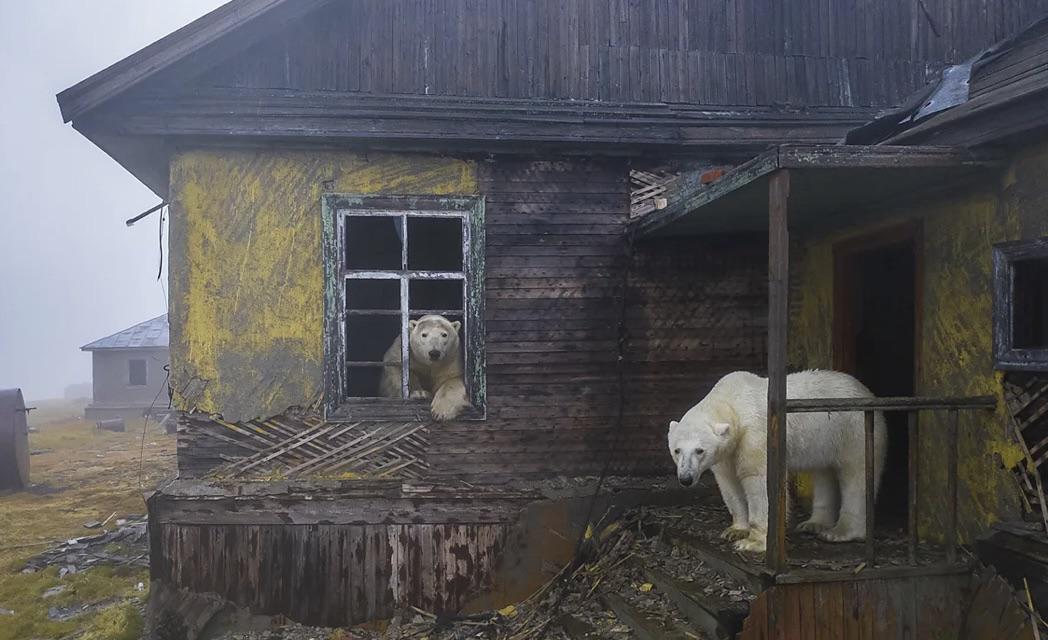When we think of ancient artifacts, our minds often go to golden treasures, intricate pottery, or towering monuments. But sometimes, the most fascinating discoveries come in the form of everyday objects—like a pair of 3,000-year-old pants. Found in China’s Tarim Basin, these trousers are believed to be the oldest known pair of pants in human history, offering a rare glimpse into the lives of ancient nomads and warriors.
The Tarim Basin, located in what is now Xinjiang, China, is known for its dry climate, which has preserved some of the most astonishing archaeological finds in history. In the early 2010s, researchers excavating an ancient burial site uncovered something truly unexpected: a pair of wool trousers, carefully woven and still largely intact despite being three millennia old.
Unlike simple fabric remnants or scraps of clothing, these were fully formed pants, designed for durability and comfort—a revolutionary piece of clothing in an era where most early cultures still relied on robes or tunics. The discovery wasn’t just about fashion; it was about the evolution of human ingenuity and the adaptability of early societies.
What makes these pants particularly remarkable is their functional design. They were created at a time when horseback riding was becoming a crucial part of daily life for the nomadic peoples of Central Asia. Prior to the widespread use of pants, many cultures wore robes or skirts, which weren’t ideal for riding long distances or engaging in combat on horseback.
These ancient trousers, made from carefully woven wool, featured:
-
A straight-legged design, allowing for flexibility and movement
-
Strengthened areas, likely to endure long hours of riding
-
Decorative patterns, suggesting a blend of function and artistry
This design highlights the adaptability of ancient civilizations—necessity truly was the mother of invention. As people moved more toward horseback travel and warfare, their clothing evolved to meet new demands.
The individuals buried with these pants were likely warriors or high-status nomads. The Tarim Basin was home to many Indo-European nomadic tribes, who roamed the vast grasslands and deserts, living a life deeply connected to their horses and the land.
These trousers may have been worn by an elite rider or a respected elder, someone whose skills in battle and travel were essential for their people’s survival. While we may never know the exact name or story of the person who wore them, their legacy endures through this remarkable piece of ancient clothing.
While fashion trends come and go, the core design of pants has remained surprisingly consistent for thousands of years. These ancient trousers share fundamental similarities with modern-day designs—proof that when something is well-crafted, it stands the test of time.
The discovery also challenges the idea that ancient people were simplistic in their craftsmanship. The wool was carefully woven, the seams were reinforced, and the patterns suggest both practicality and cultural identity. These weren’t just rough garments thrown together—they were tailored for a specific lifestyle, much like how clothing today is designed for different activities.
Today, these ancient pants serve as a powerful reminder of the creativity and adaptability of early civilizations. From warriors riding across vast landscapes to modern-day fashion, the story of pants spans across millennia, proving that some innovations truly never go out of style.
It’s not every day that a simple piece of clothing connects us so deeply with the past. These 3,000-year-old trousers are more than just fabric—they’re a testament to the human spirit, evolution, and the timeless need for both function and fashion.







